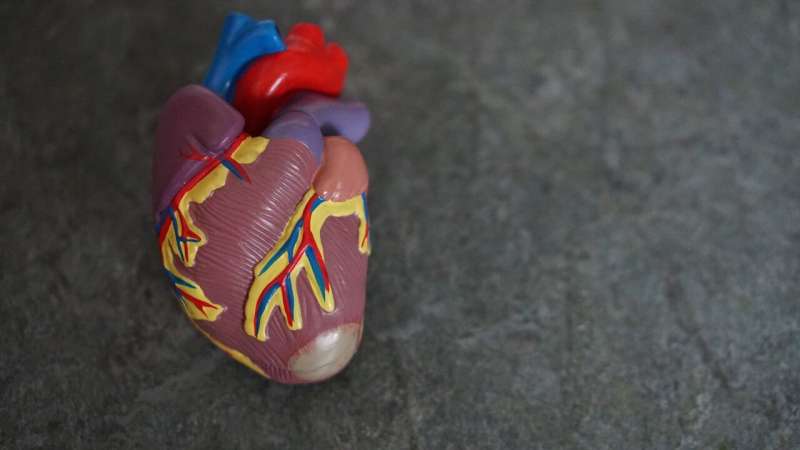This article has been reviewed according to Science X's editorial process and policies. Editors have highlighted the following attributes while ensuring the content's credibility:
fact-checked
peer-reviewed publication
trusted source
proofread
Price tag on cardiovascular disease in Europe higher than entire EU budget: Study

Cardiovascular disease (CVD) cost the EU an estimated €282 billion in 2021, according to late breaking research presented at ESC Congress 2023. Health and long-term care accounted for €155 billion (55%) of these costs, equaling 11% of EU health expenditure. The findings are published in the European Heart Journal, and the analysis was a collaborative effort by the European Society of Cardiology (ESC) and the University of Oxford, UK.
Study author Dr. Ramon Luengo-Fernandez of the University of Oxford said, "CVD had a significant impact on the EU27 economy, costing a total of €282 billion in 2021. That's equivalent to 2% of Europe's GDP and is significantly more than the entire EU budget itself, used to fund research, agriculture, infrastructure and energy across the Union."
This was the most comprehensive and up-to-date analysis of the economic costs of CVD to society in the EU since 2006. It is the first study to use Europe-wide patient registries and surveys rather than relying on assumptions and, unlike previous reports, includes the costs of long-term social care. The current analysis provides estimates of the societal economic costs of CVD for the 27 members states of the EU in 2021, including 1) health and social care; 2) informal care; and 3) productivity losses. The breakdown includes:
- €130 billion for health care (46%)
- €25 billion for social care (9%)
- €79 billion for informal care (28%)
- €15 billion in productivity losses due to illness/disability (5%)
- €32 billion in productivity losses due to premature death (12%).
The total cost equated to €630 per EU citizen, ranging from €381 in Cyprus to €903 in Germany.
CVD cost health and social care systems approximately €155 billion in 2021, accounting for 11% of total health care expenditure. There was wide variation between countries in the proportion of health care budgets spent on CVD, from 6% in Denmark to 19% in Hungary. Health care included primary care, emergency care, hospital care, outpatient care and medications, while social care included long-term institutionalized care, and care at home.
The main contributor was hospital care, which cost €79 billion, representing 51% of CVD-related care costs. CVD medications accounted for €31 billion (20%) of care costs, followed by residential nursing care homes at €15 billion (9%).
Informal care costs included the work or leisure time, valued in monetary terms, that relatives and friends gave up to provide unpaid care. Relatives and friends provided 7.5 billion hours of unpaid care for patients with CVD, amounting to €79 billion across the EU.
Productivity losses included lost earnings due to illness/disability (early retirement/absenteeism) or premature death. In 2021, 256 million working-days were lost in the EU because of CVD illness/disability, at a cost of €15 billion. That same year, 1.7 million people died due to CVD across the EU, representing 1.3 million working-years lost, and generating productivity losses of €32 billion.
ESC Board member and study author Professor Victor Aboyans of Limoges University, France said, "This study underscores the urgent need to act collectively on the European scale to better combat the cardiovascular risk of European citizens, in particular through regulations for better cardiovascular prevention and investment in research. By choosing not to invest in cardiovascular disease we are simply deferring the cost. These data force us to ask the question: do we invest in cardiovascular health today or be forced to pay more at a later stage?"
Professor Panos Vardas, chief strategy officer of the European Heart Agency, the ESC's office in Brussels, said, "Today's presentation provides a clear understanding of the overall economic burden of cardiovascular disease across different EU countries, offering the opportunity to draw valuable conclusions that are useful for those responsible for designing health care plans."
"It is evident that there is significant fragmentation among EU countries in terms of cardiovascular disease health care expenditures. This necessitates a re-evaluation by the EU as a whole, and the 27 EU countries individually, to better address the outstanding needs and invest more effectively in supporting those suffering from cardiovascular disease."
More information: Ramon Luengo-Fernandez et al, Economic burden of cardiovascular diseases in the European Union: a population-based cost study, European Heart Journal (2023). DOI: 10.1093/eurheartj/ehad583





















